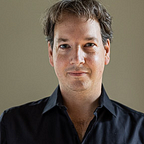TEDx The Social Turn (2015)
Let me ask you three questions.
1) Who of you has ever made a donation?
2) And who has ever made an investment?
3) Now for the trickier one: Who has ever invested in the same organization to which they had previously donated?
Why not? Think about it: You have 100 Euros in your pocket. Wether you invest or donate it, it is still the same money. But why do we think in completely different categories? And why do we emotionally feel totally different about it? Investing vs. Giving. Profit vs. Non-Profit. Let us have a closer look on this special relationship.
We build a whole system around the principle that we either do things for our own profit or for the benefit of others. Not only with money, but with time, our careers, and even our families and friends.
When charity and markets meet, we tend to be skeptical. Sometimes for good reason. However, I would like to argue that that the sharp division between nonprofit and forprofit, between social and commercial, will be alien to our children, a thing of the past.
There are not two kinds of organizations, not two kinds of people, not two kinds of money, but a continuum. By locking our society and our markets into these irreconcilable positions, we miss the big picture of how to solve the toughest problems with the resources we have not the resources we wish we had. This is not less ethical but at the same time more optimistic and more realistic.
Early on in the history of an idea tackling market or government failure, it is likely to consume all resources but into it. Over time, as the new model gains acceptance, it moves towards a market — not necessarily with the beneficiaries paying but often with governments as the early principal customer. Then it begins to repay part of its investment, or it could if structured accordingly (this rarely happens). Over time, many become markets like any other.
We are used to this pattern in science, from fundamental research to applied research to product markets. And in many other places. Once you start looking, this is everywhere: ideas not on one end of the spectrum but between early nonprofit and later commercially viable market phases.
How can we make more of this happen? In order to do this systematically, we need to cast a completely new and different look on finance. Donations are a very hard currency, perhaps the hardest to generate over time. Need a social finance system to fund ideas wherever they are along the spectrum from nonprofit to forprofit. Hybrid finance. Simple idea, syndicate from different sources of capital. We do it all the time in business, why not for social ideas?
This does not mean all nonprofits become commercial. It means that we recognize the roots of great business potential in social ideas. Ideas from the bottom up responding to the world’s most urgent needs are becoming the scarce resource that a social venture capital sector will go after, and governments will compete for the changemakers the way they compete for company tax breaks today.
For you, this has major implications. If you are considering your career … if you are thinking about an investment … if your are advising your kids what to do.
